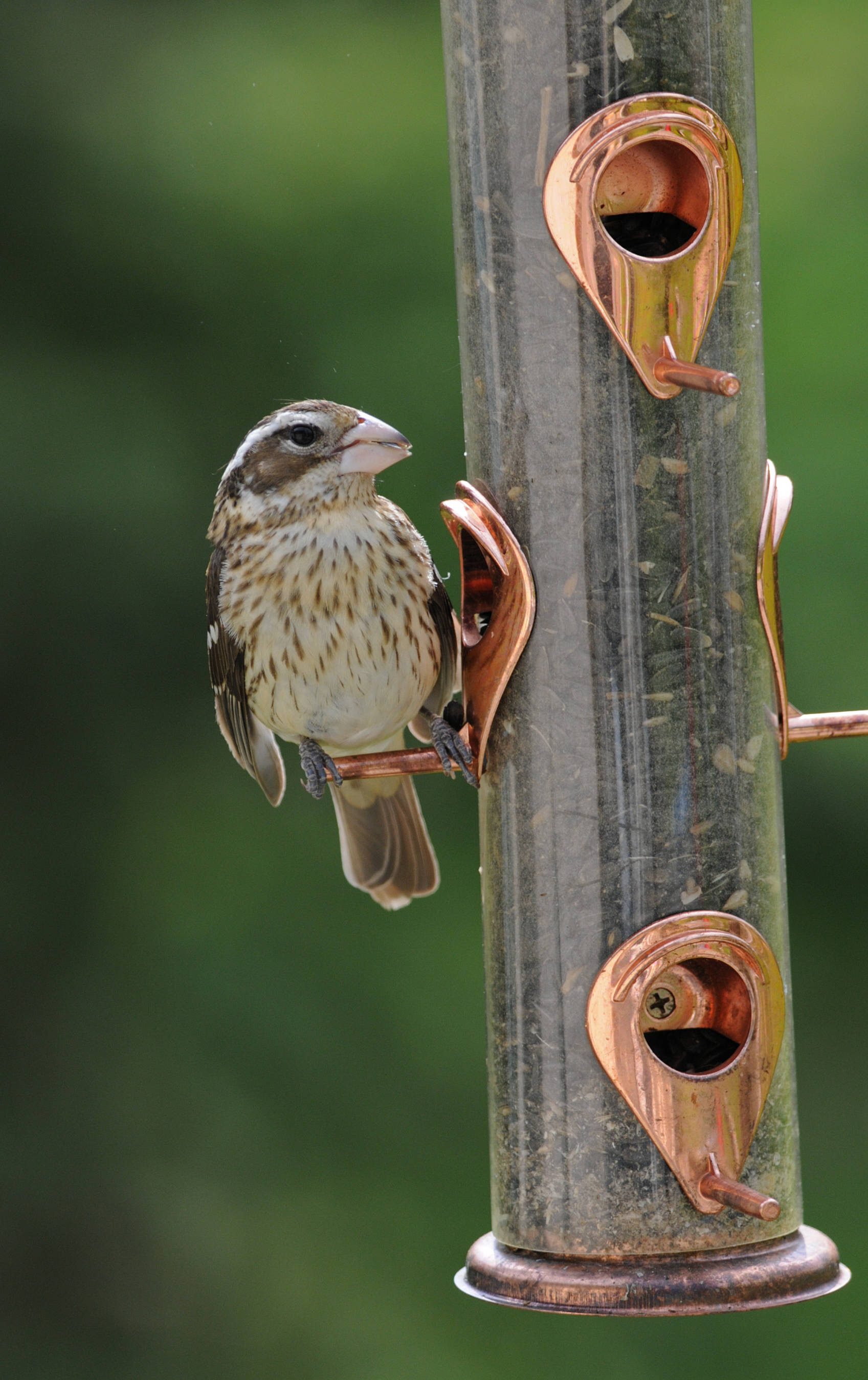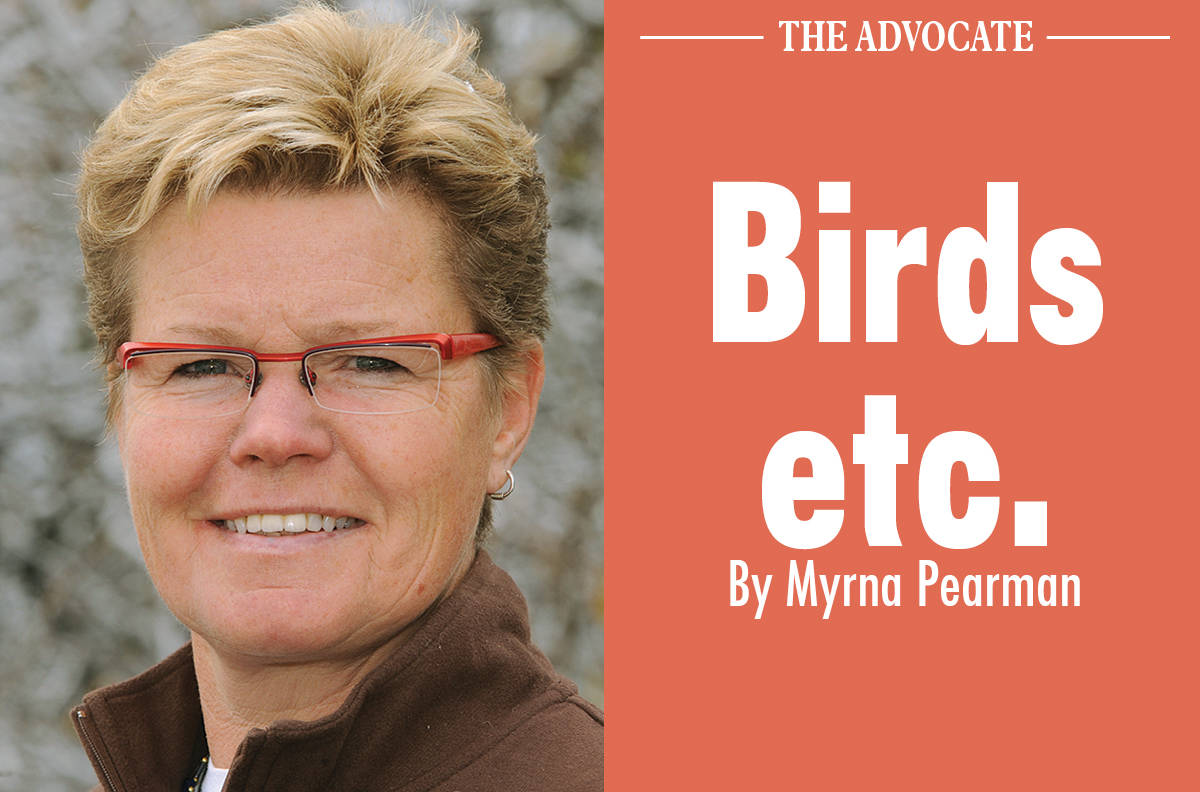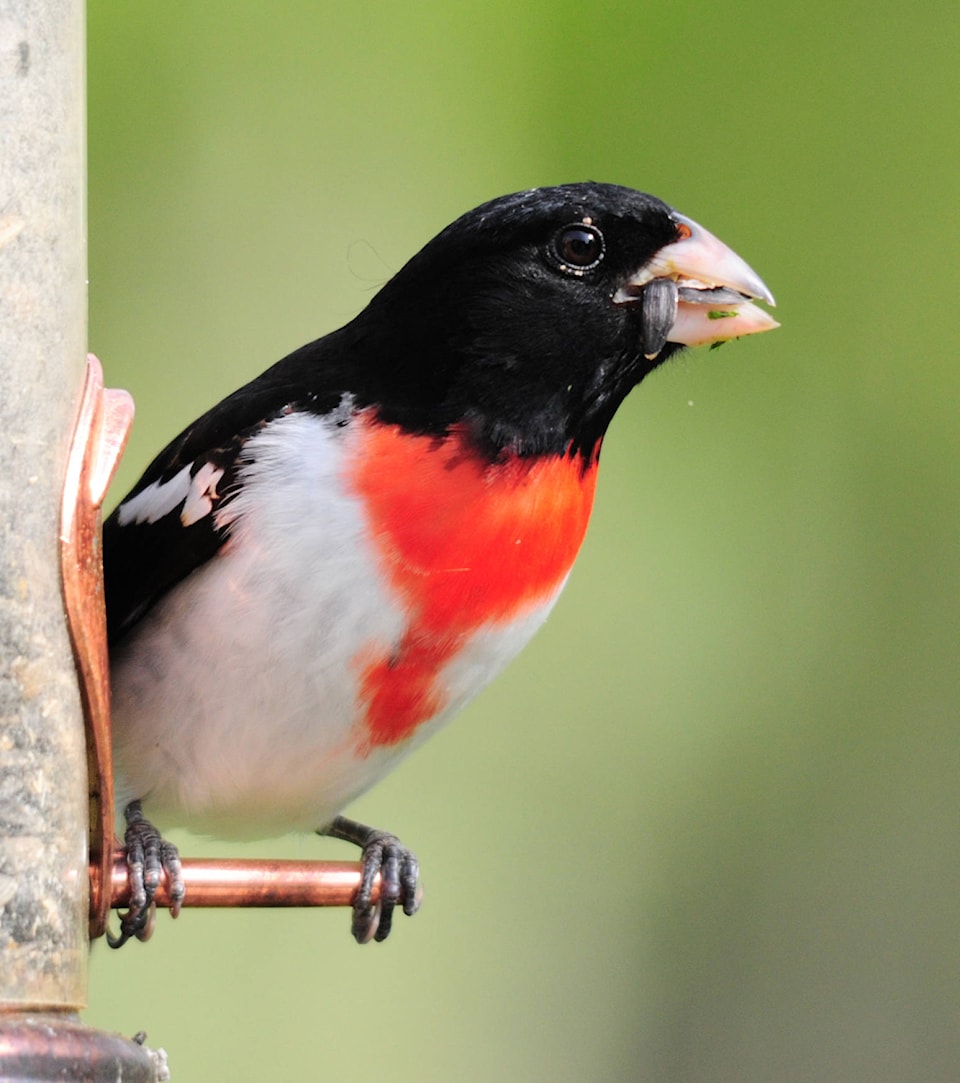We have been getting a number of calls at Ellis Bird Farm this spring about Rose-breasted Grosbeaks.
A member of the cardinal family, the species is so named because of its colour and thick, seed-crunching beak.
The males are strikingly black and white, with a beautiful triangular splash of rosy red on their breast. They also have red under their wings, which can be seen when their wings are outstretched.
The females and immatures are streaked brown and white with a bold face pattern. Immature males have varying tints of rose on their breasts.
It appears that this species is enjoying a population increase. I first noticed them visiting my bird feeders about five years ago, and now have them coming on a regular basis.
Not only are these birds dramatic in appearance, they have a beautiful song. They sound like an American robin that has had voice training, and so loves to sing, that it goes on and on and on.
Males sing their beautiful arias to establish territories and attract females. When a female approaches, the male rebuffs her for a day or two, before he accepts her as a mate.
Once mated, they are monogamous, and breeding pairs will even tolerate migrant males within the boundaries of their territory, as long as the intruder doesn’t try to sing. If it utters any vocalizations, the territorial males will drive it off. Females drive off other females that appear interested in their mate.
A few years ago, I had the good fortune to see a Rose-breasted Grosbeak nest. I was amazed at how flimsy and poorly constructed it was – we could literally see the young birds up through the bottom of the nest. Interestingly, the nest was defended by both the adult pair, as well as two immature males.
Both parent Rose-breasted Grosbeaks share incubation, brooding and feeding duties. The male only incubates for a few hours during the day (during which he might belt out his song at full volume), while the female incubates for the remainder of the day and all through the night.
Nest predators include squirrels, blue jays and Common grackles, which the parents (and helpers) will mob noisily and aggressively. Adult grosbeaks are hunted by Cooper’s hawks and Sharp-shinned hawks.
Sadly, the Rose-breasted Grosbeaks are commonly trapped for sale as cage birds in their wintering range. The impact of this practice on their population has not been documented.
Fortunately for those of us who enjoy watching these birds, Rose-breasted Grosbeaks will visit backyard bird feeders to dine on sunflower seeds as well as safflower seeds and raw peanuts.
I hope you will be able to attract and enjoy these beautiful songsters in your backyard this summer.
Myrna Pearman is the biologist and site services manager at Ellis Bird Farm. She can be reached at mpearman@ellisbirdfarm.ca.


